

One of the aspects of Italy we loved were the medieval mountain villages. In the United States, most villages are placed in valleys and on waterways (for transportation or power). In Italy, though, the medieval villages were primarily on hills or mountains. Italy was not a unified country until recently, and the Roman empire had ceased to exist by the Middle Ages. AsWikipedia states, "In the 11th century began a political development unique to Italy, the transformation of medieval communes into powerful city states.... [T]he Italian city states were in a state of constant warfare...." Because of this, the villages were placed in strategically defensible locations ... aka, the high ground. Walled villages (or at least the walled village centers) are scattered throughout Italy ... certainly throughout Marche.
We loved driving around and looking at the landscape and the little villages. As we describe and share pictures from the villages, I will refer back to the points on the introductory page map. You already saw pictures from Sant'Angelo in Lizzola (site #4). Very close to Sant'Angelo in Lizzola is Monteciccardo (map site #5). Monteciccardo is listed as Allesandro's address on the marriage certificate. Allesandro is Paul's great-grandfather.
Monteciccardo is a small town, with typical small-town hours.
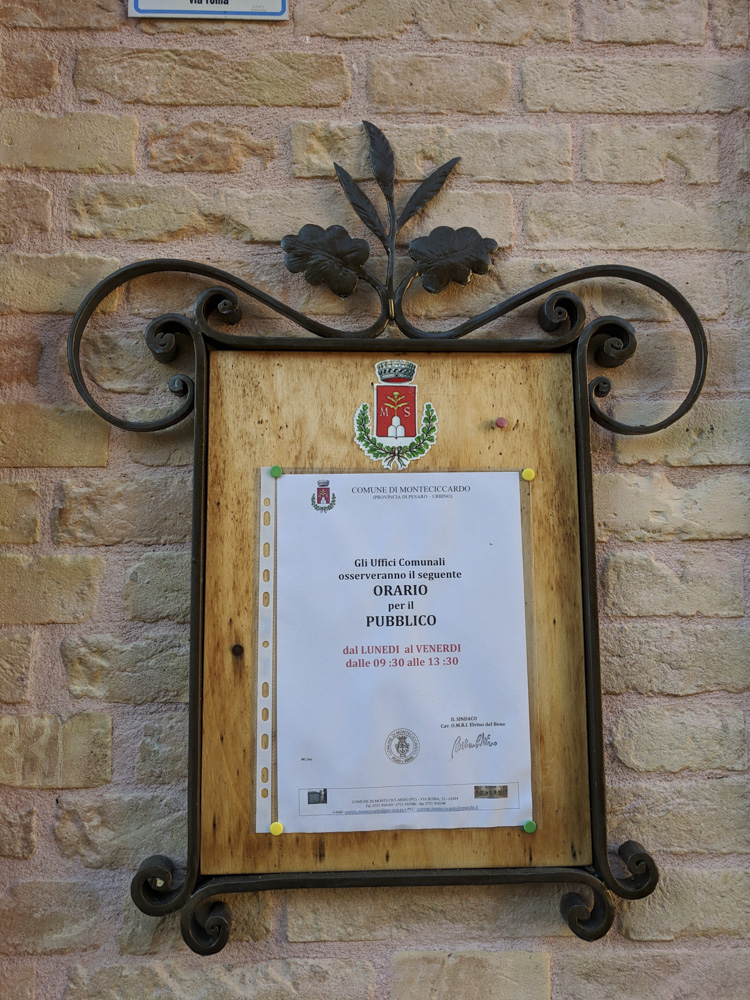
(That translates as "Municipality offices have the following hours for the public: Monday to Friday, 9:30 AM until 1:30 PM")
Montecicardo is even higher on the hill than Sant'Angelo. You can easily see to the ocean from the viewpoint there.
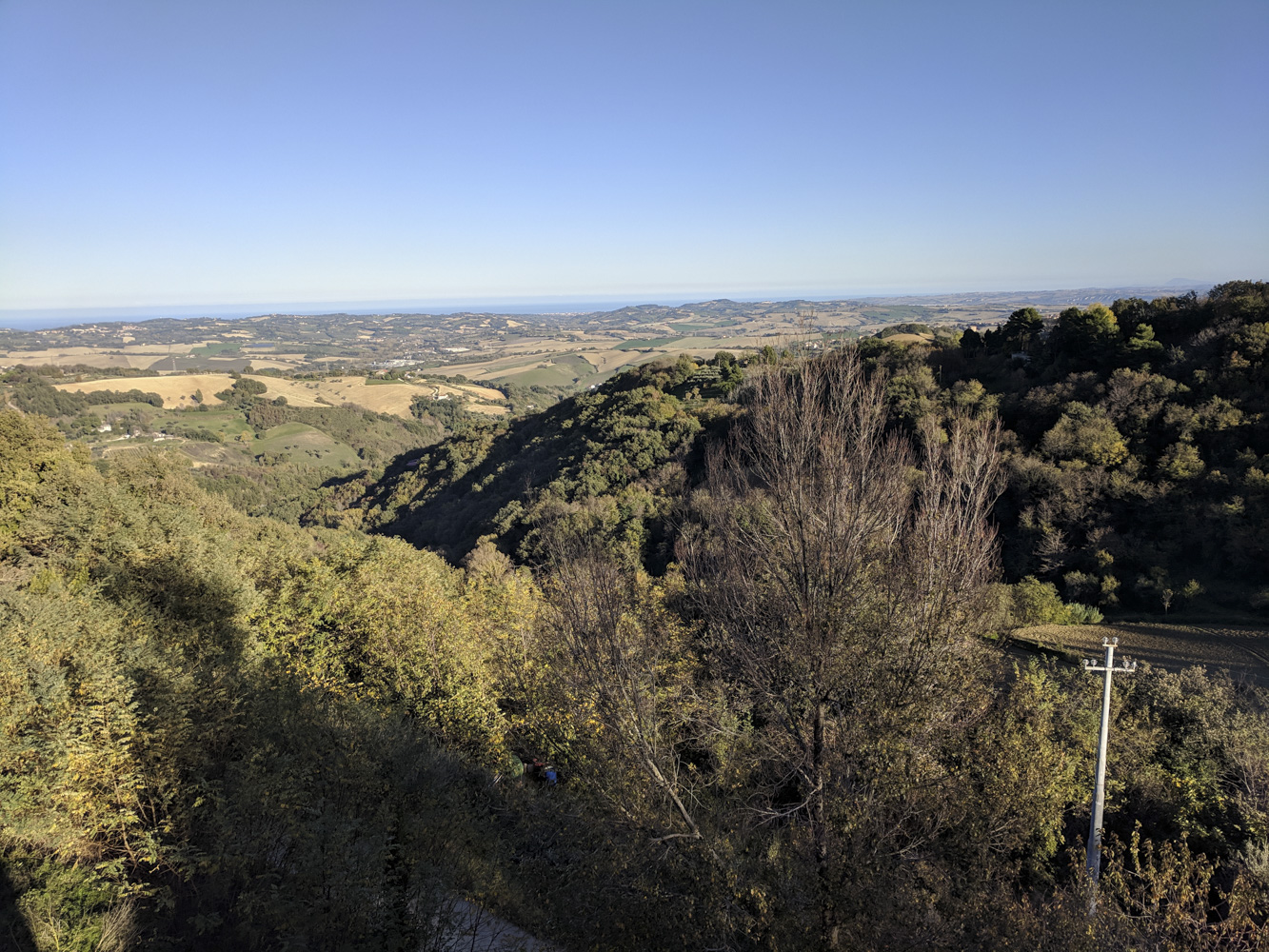
While we were looking at the view, an older man best described as "spry" came up to us and commented (in Italian) on the view. He introduced himself as Carlo. While Carlo didn't speak any English, he spoke Italian clearly and we were able to communicate somewhat despite our weak Italian speaking skills. Carlo was an absolute sweetheart. We told him about Paul's great-grandfather. Carlo took us around the village, along the grand wall, and showed us the plants in the various gardens. This plant that he is showing is an edible thistle (Cardo in Italian). Doni had served us this, and it is very good. (link to a sample recipe) Cardi are some of the few plants still in the fields in November, when we were in Marche.
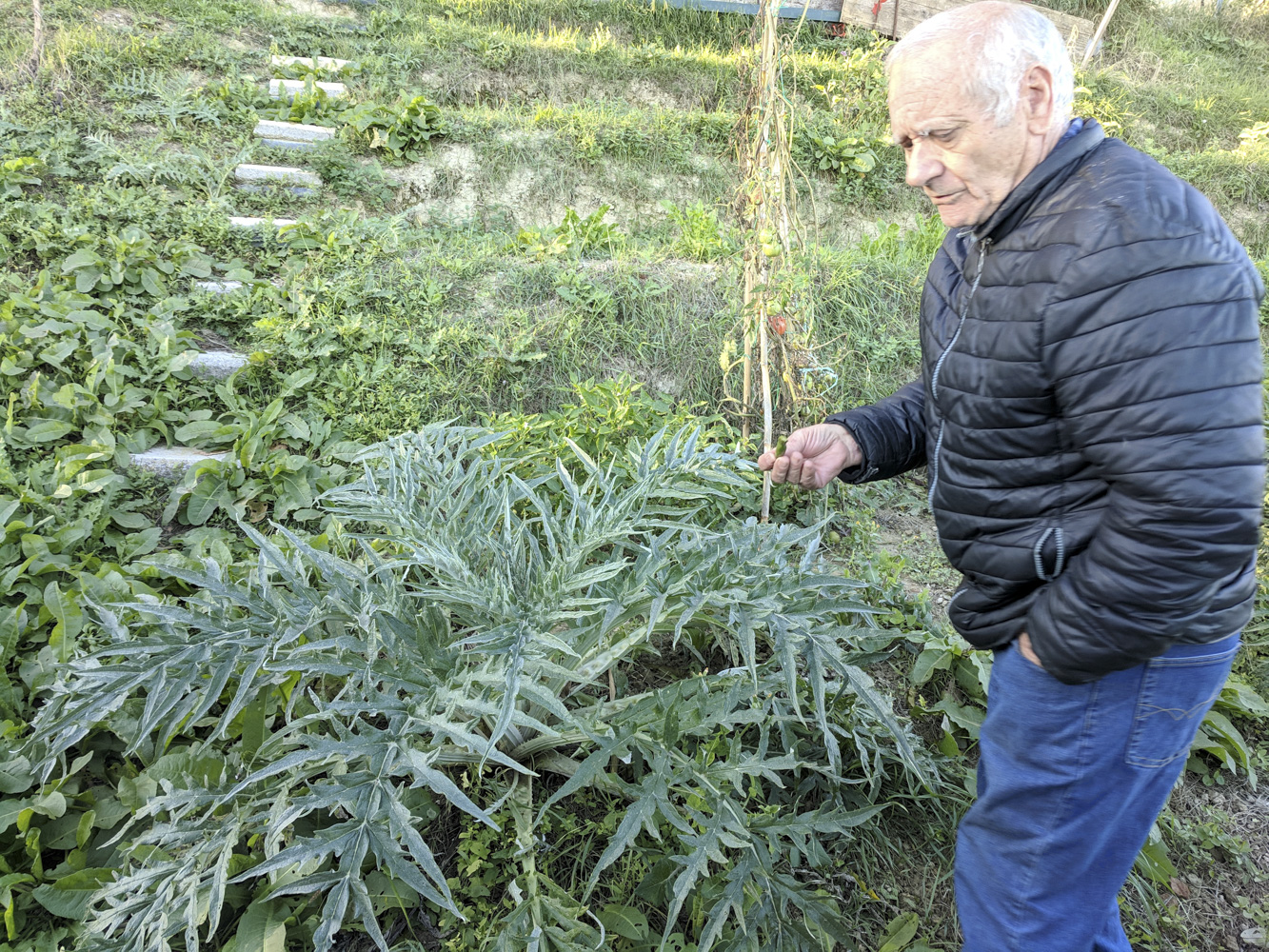
Here is a video where you can briefly see Carlo, and it gives a view of the grand wall and the countryside. (1 minute 53 seconds)
This next picture is of a Persimmon tree, which are fairly prevalent in the area.
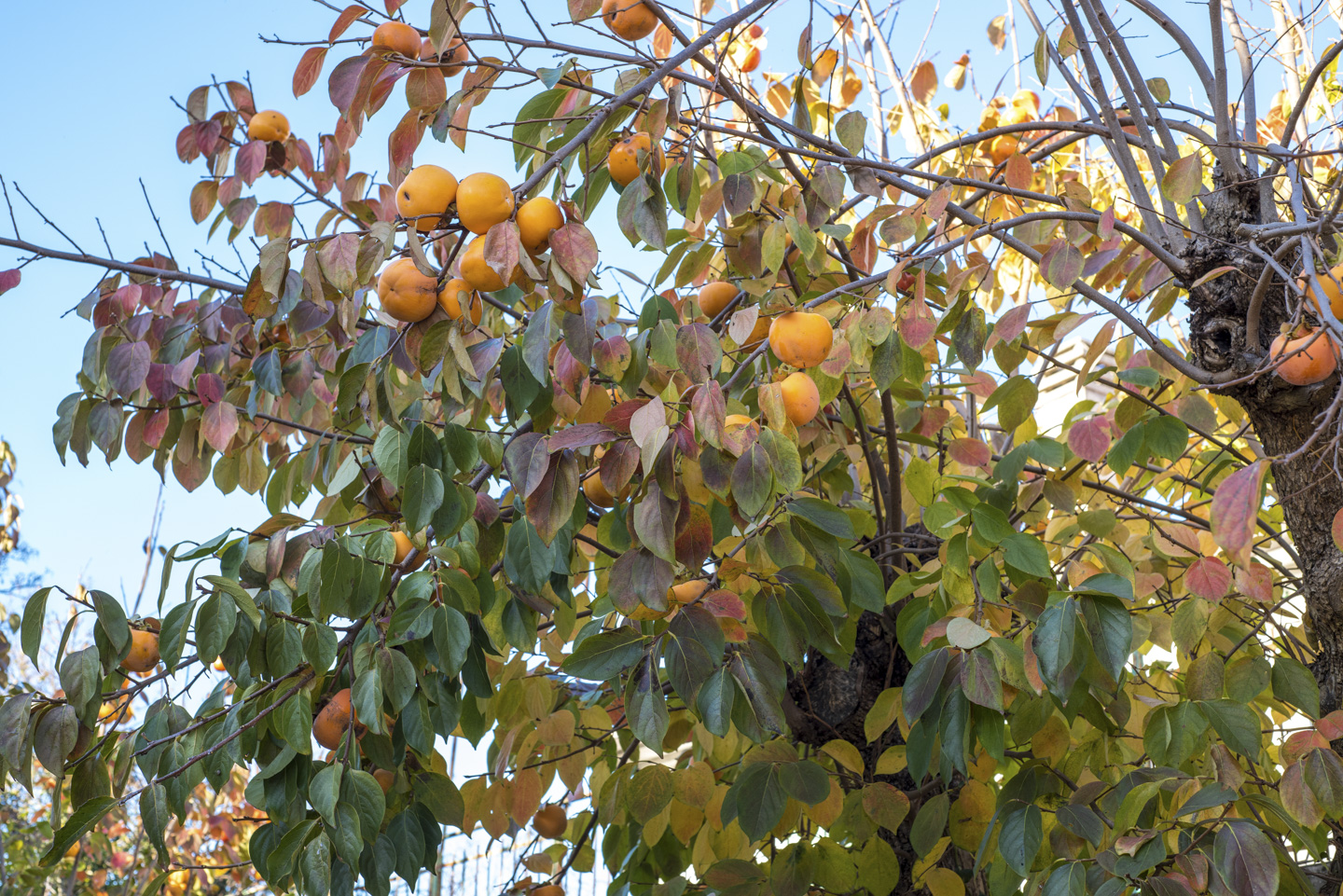
Candelara is another village in the area. (Site #6) As far as we know, the family doesn't have a connection to this particular village. If the name reminds of you candles, you aren't the only one: it reminds the villagers of candles as well. Around Christmas, they have a candle celebration. They also have bees-wax candle making sessions for school children. And, as you would expect with a mountain village, there are some great views.
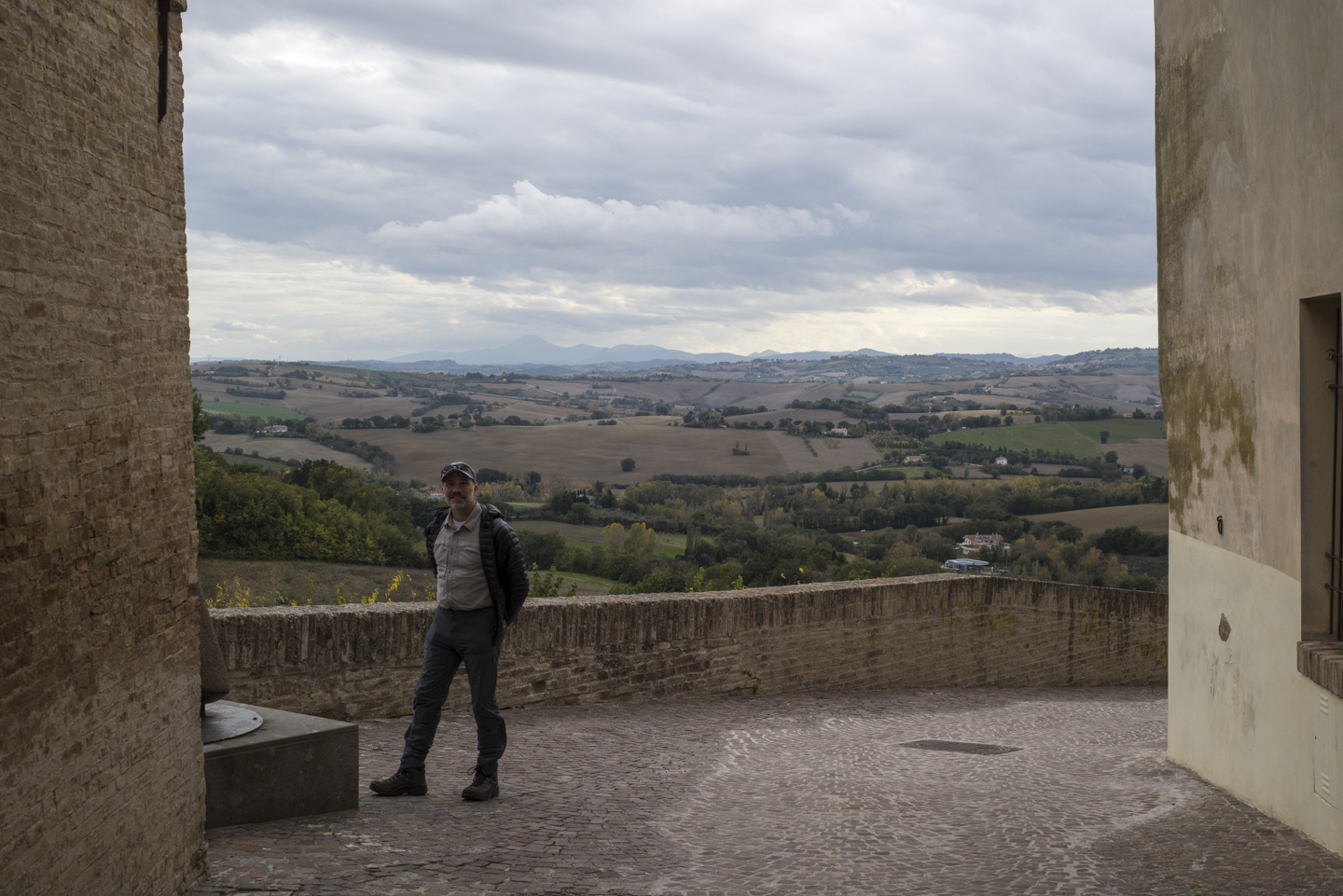
There probably isn't another picture of it in this trip report, so here is a picture of our rental car. It is the white car in the middle of the picture. You can see they have already started decorating for the candle festival, which would be taking place a couple weeks after we were there.
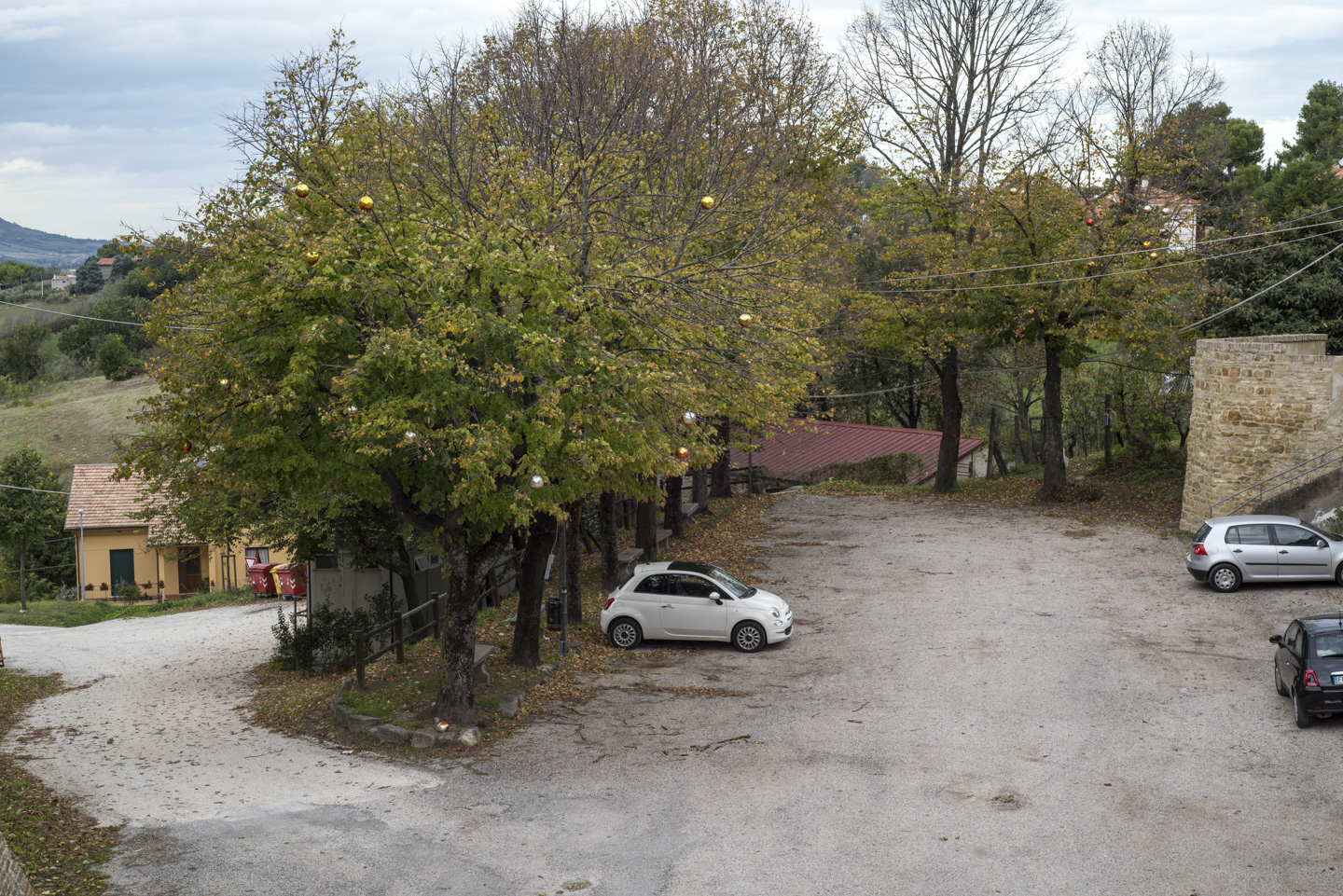
We've mentioned the high walls that these villages have. In this next picture Paul is standing next to the wall, which will give you some scale. You can also see the clock tower.
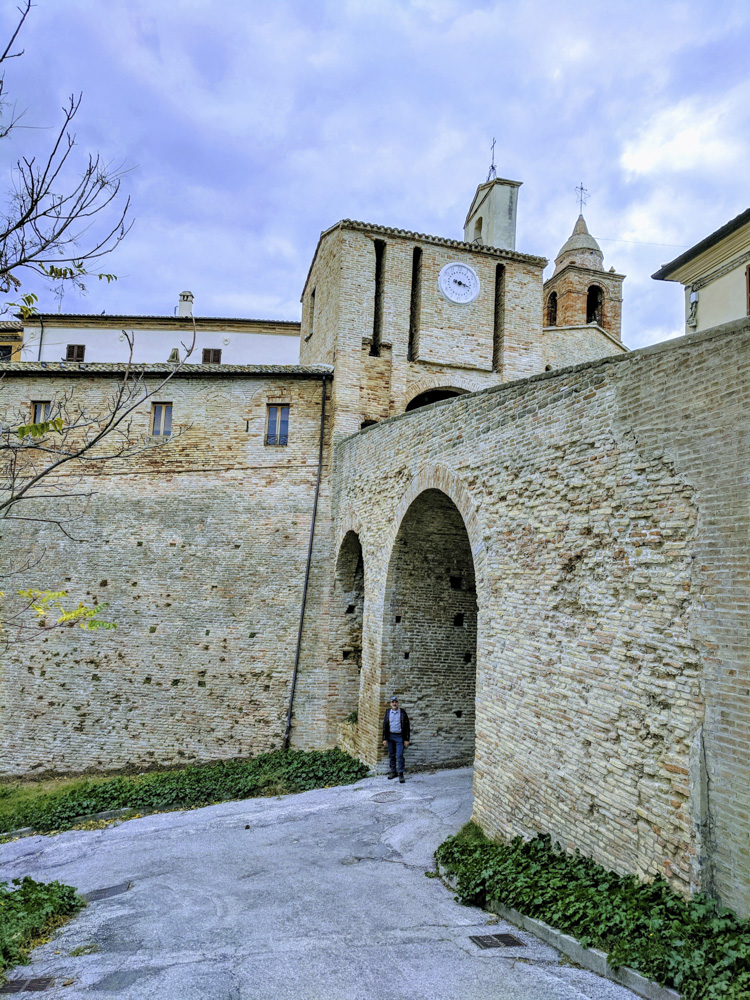
Here is a link to a video showing this wall & spot from above (40 seconds)
Almost every village has at least some piece of public artwork displayed. The one we saw here is fairly new, from 2015, that represents a local Bishop and was donated by Pesaro sculptor Terenzio Pedini to this village where his family came from.
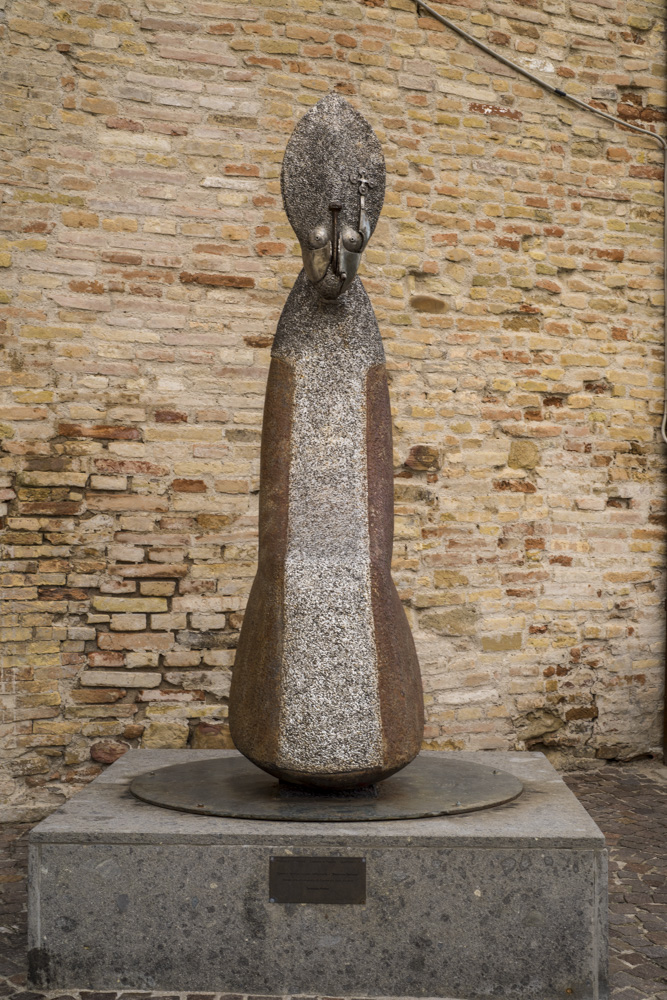
Another nearby village was Mombaroccio. We were there at the beginning of November, and they were definitely gearing up for Christmas. Here is the house of Father Christmas:
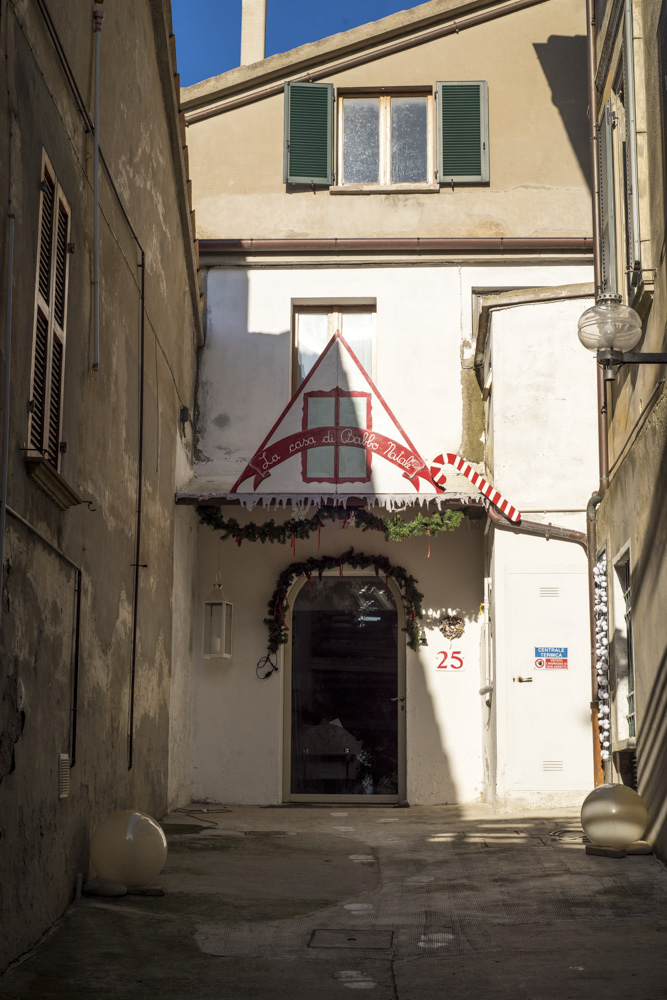
The church there, the Church of Saints Vito and Modesto, had a very cute display of nativities. The different scenes represented many different parts of the world, with little labels. They had Mexico, Taiwan, Uganda, Norway, and many others. It was really lovely.
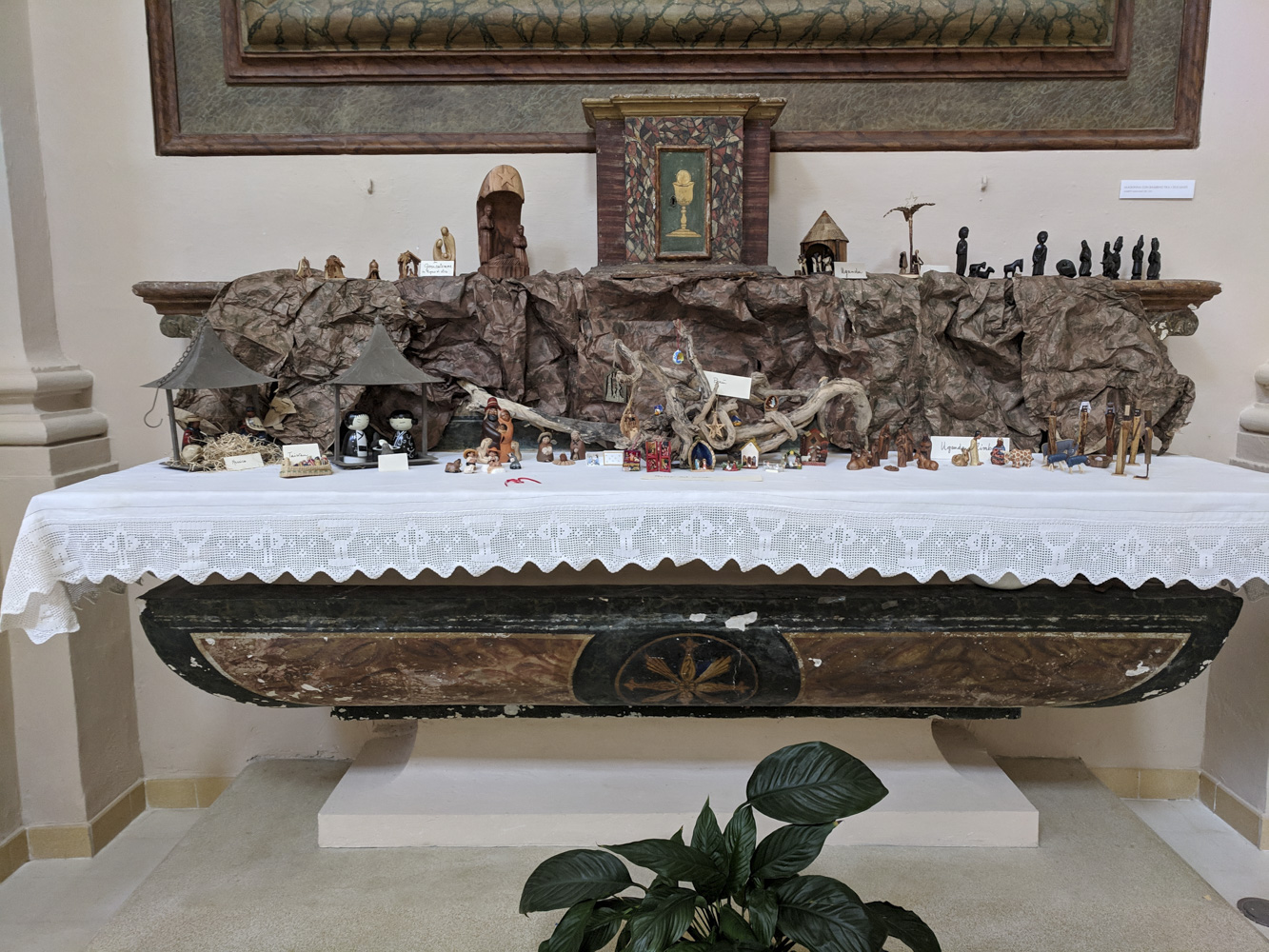
Link to a video showing a 'life size' nativity in one of the yards (28 seconds)
If you recall back in Sant'Angelo in Lizzola, we showed you the 'Turkish toilet'. Mombaroccio does this one better: (also shown in the photo below) (2 minutes 1 second)
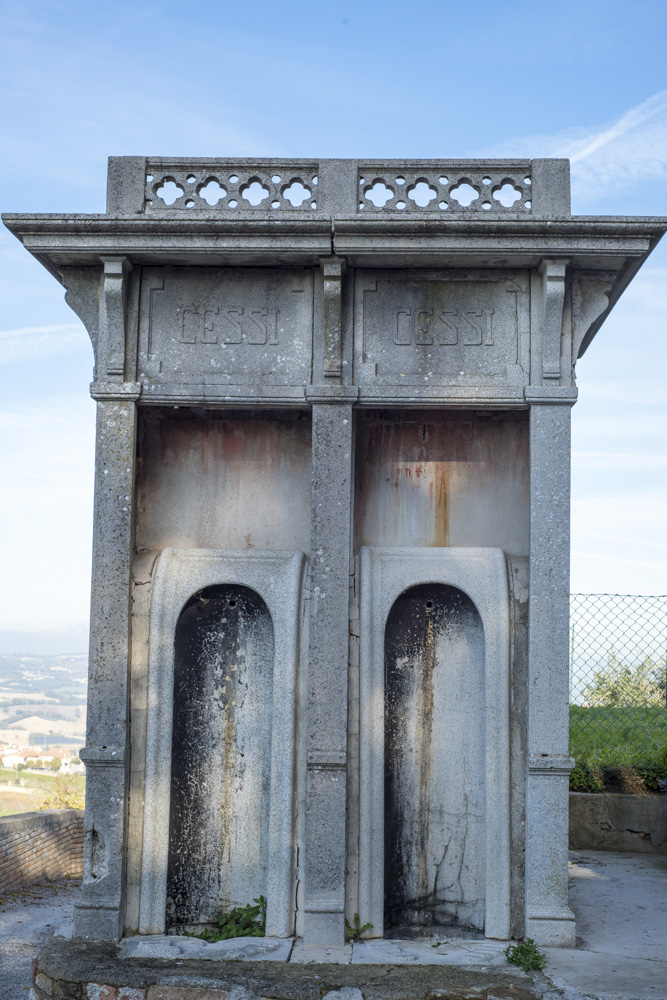
On the other side was what once would have been the 'Turkish toilet' equivalent. Of course, these outdoor bathrooms aren't actually used anymore, as you can likely tell from the pictures. We didn't see any indication of when they were built.
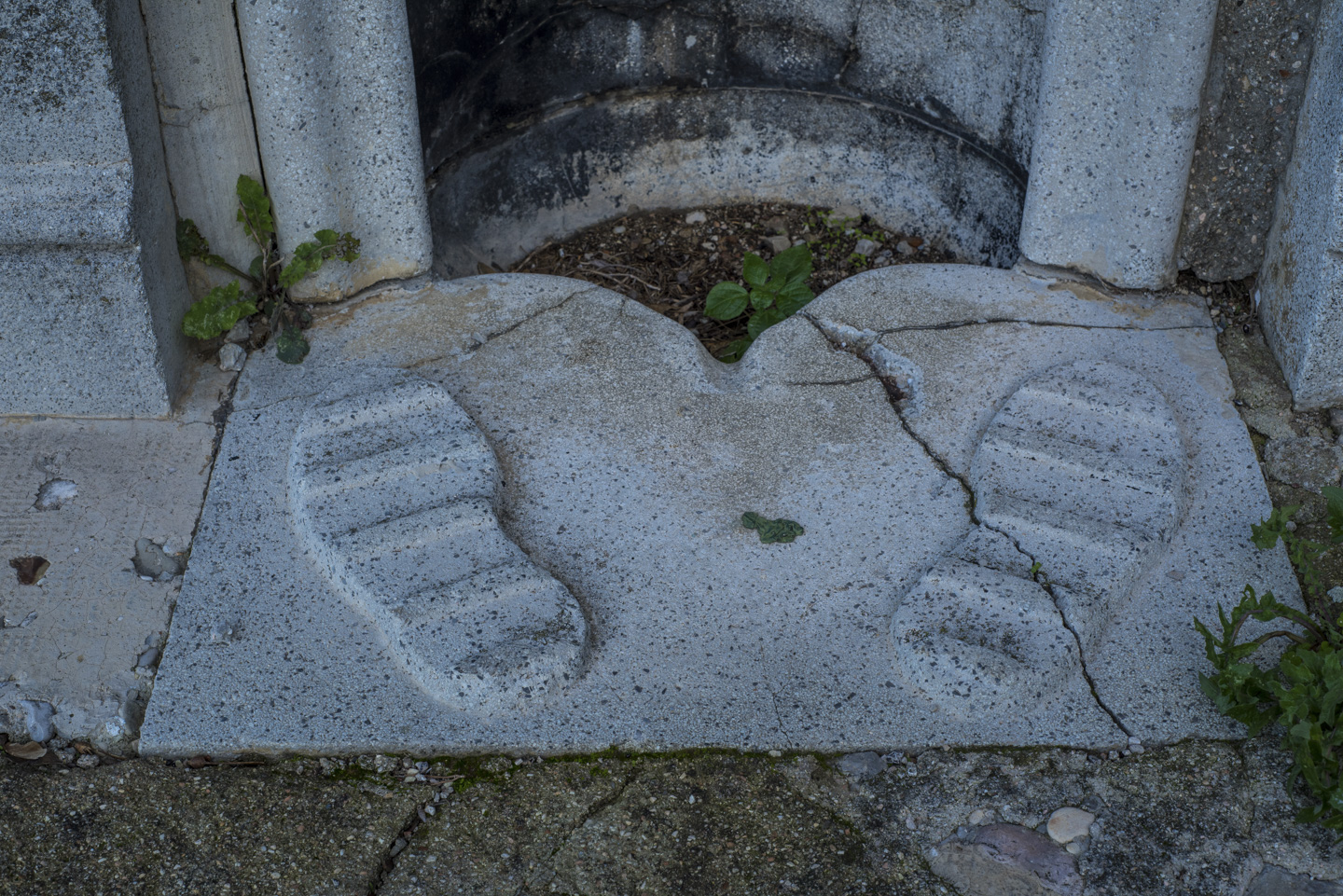
Here is Anne at the entrance to the village. To the left of the entrance is a little bar / restaurant where Anne had a sandwich (grilled vegetables, of course).
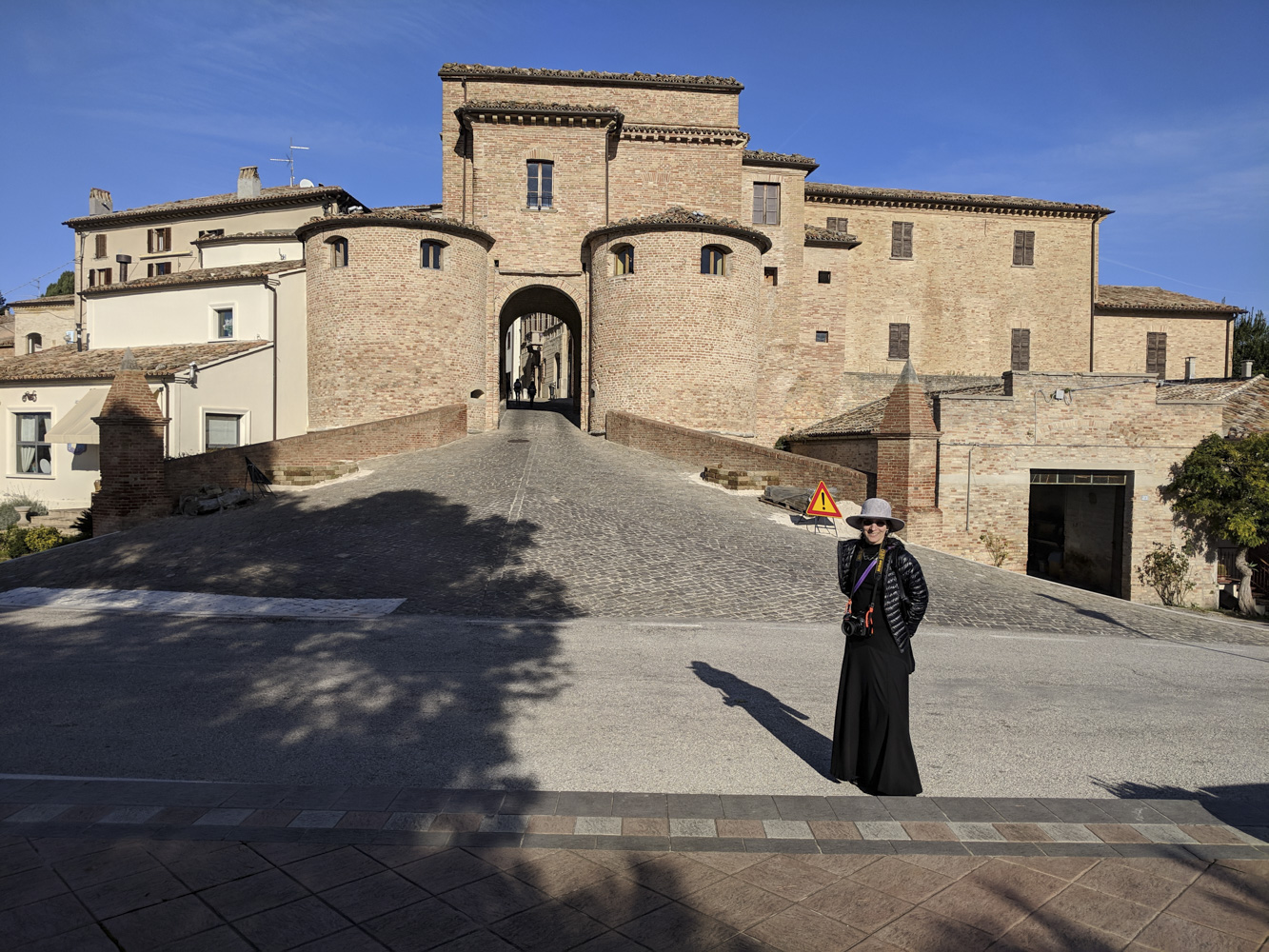
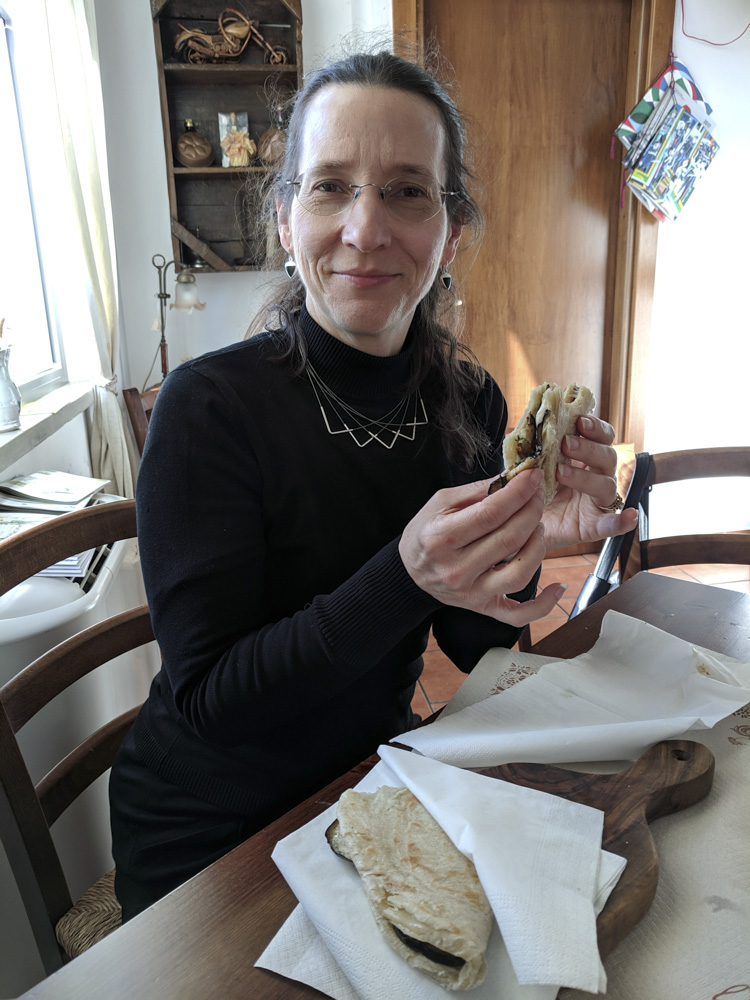
Cerasa is site #11 on our map. Paul's great-grandparents Eugenio and Rosa were from Cerasa. It is a small village located South of Via Flaminia. (The other villages we have shown were all North of the road, which is now called SS73 in this section.) We had driven through it earlier in our stay without realizing that the family had a connection to it. The Old City Center here is very small and quiet.
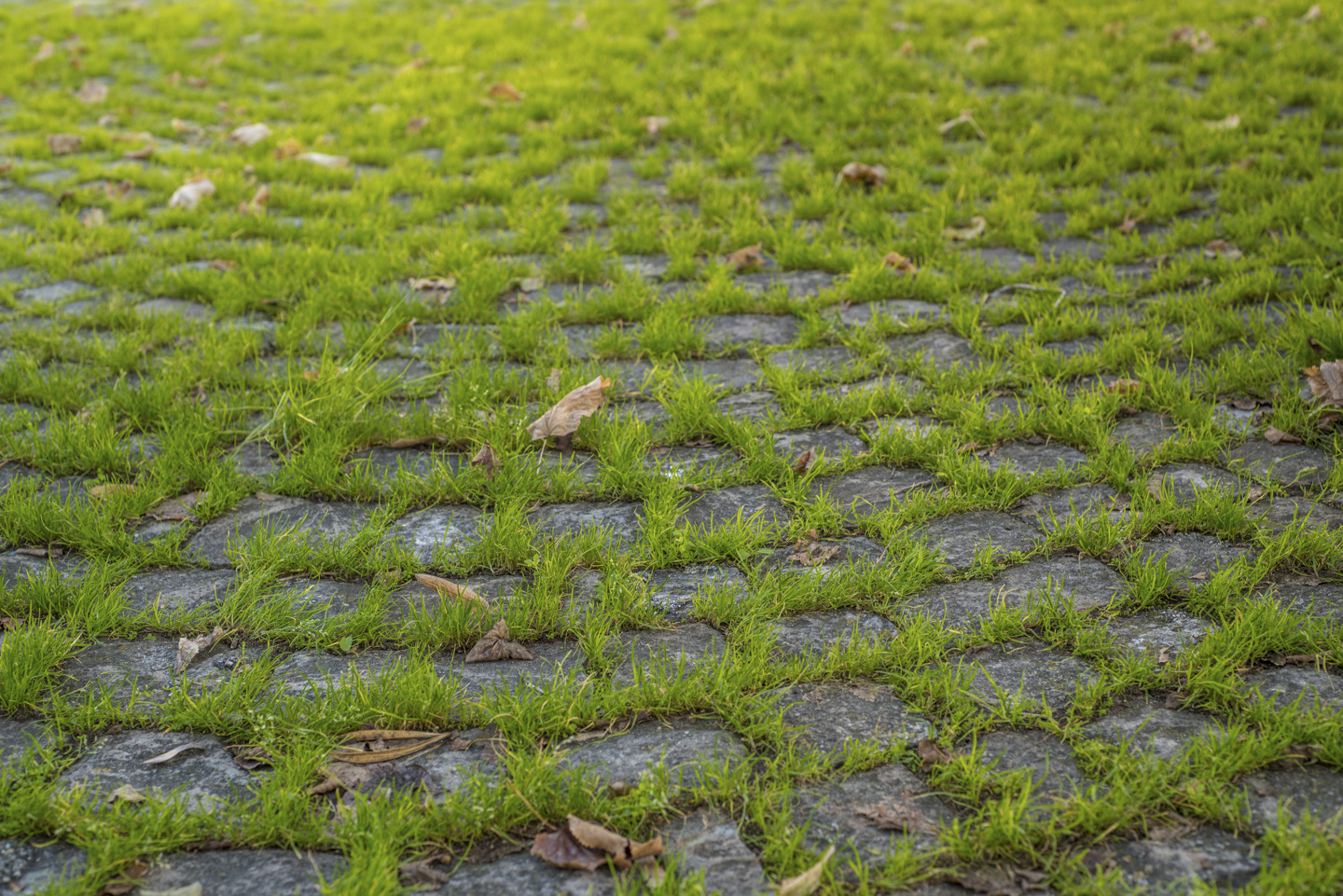
We mentioned previously that there are hardly 2 doors in Italy that are alike. This is a lovely one.
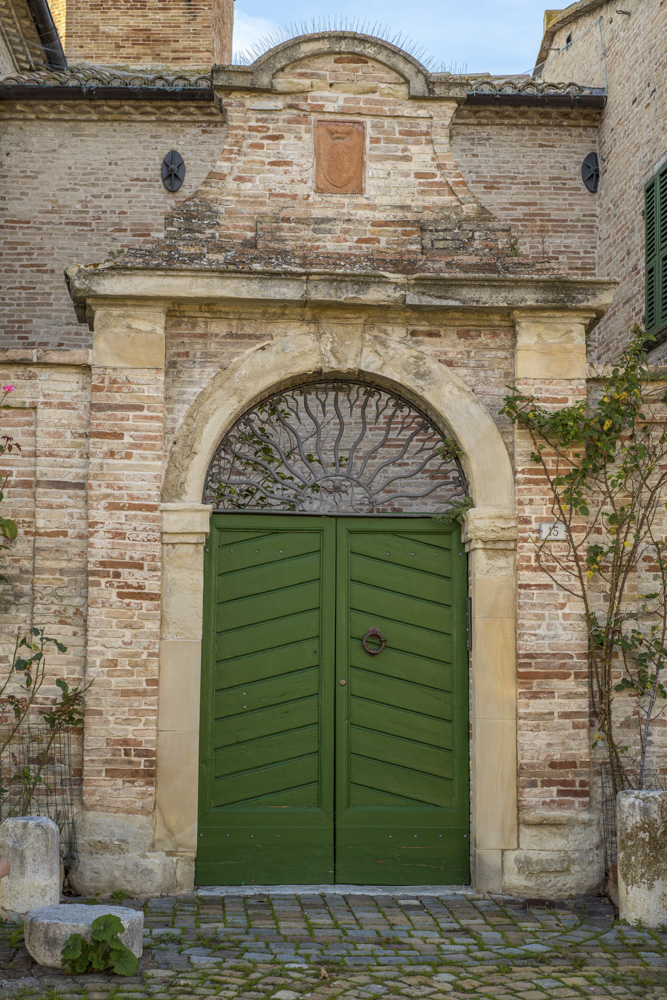
The church here was restored in 1992, according to the engraved stone on the outside wall. As we did at many of the churches, we put in a donation and lit a candle. This was one of the few churches that had wax candles; most use flameless LED versions.
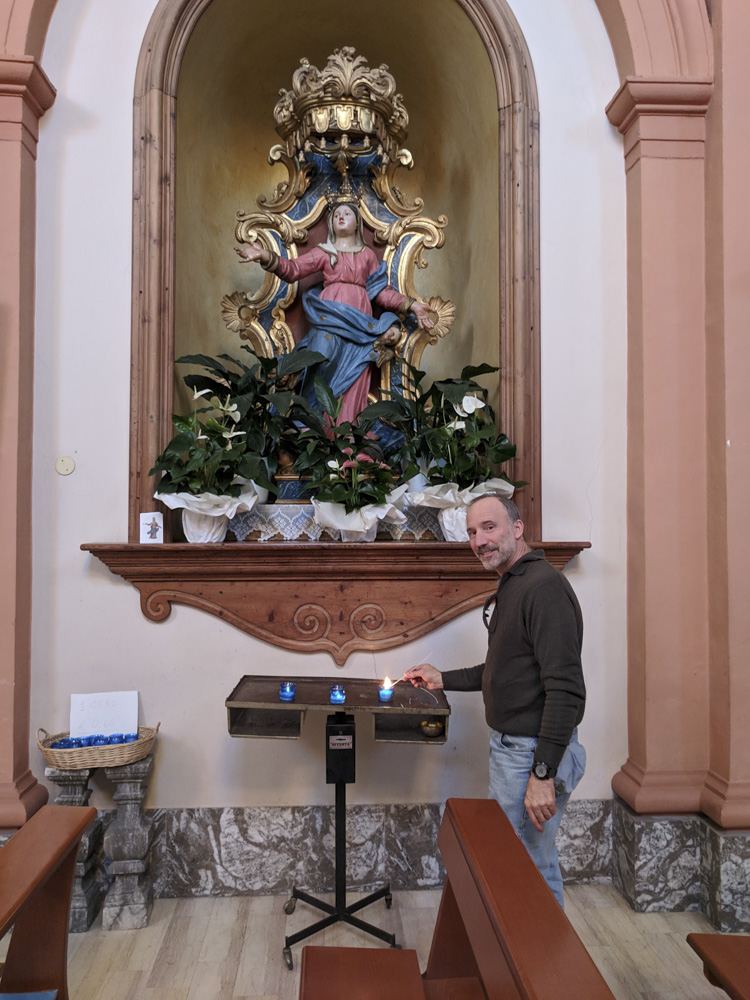
This next picture shows a street in the historic city center of Cerasa. Moving day must be extremely difficult here.
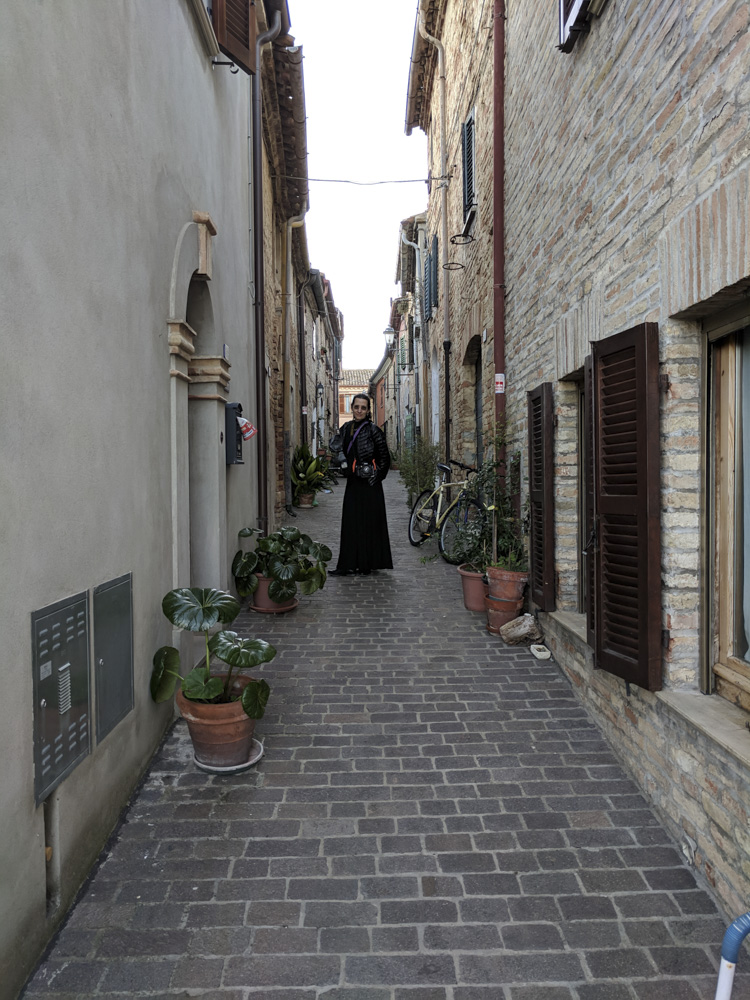
Here is a video showing a persimmon tree in Cerasa, with Anne under it, and then a bit of the area. (2 minutes 18 seconds)
In this picture of the clock tower, you can see the many very large turnbuckles being used to reinforce the walls. These buildings are hundreds of years old, and after a while gravity starts taking a toll. In many buildings, turnbuckles have been added to help the walls stay strong. (If interested, see Wikipedia for more information on turnbuckles.)
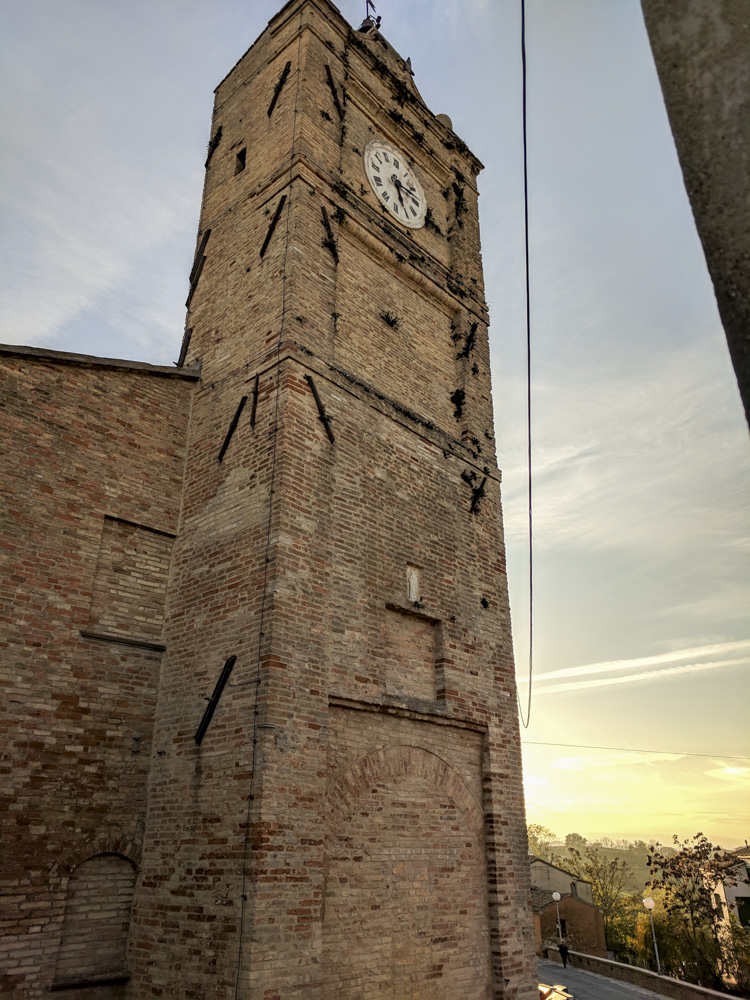
Site #12 is Montemaggiore al Metauro. Unfortunately we don't have any pictures to share from this village, although we did go through it. After we got home, we discovered that one side of Paul's family, his father's maternal side (Nazzareno Lucarelli / Fanazia [Fannie] Londei), lived in this village before moving to the United States.
Please continue to Page 2 about the medieval villages
Updated July 2020